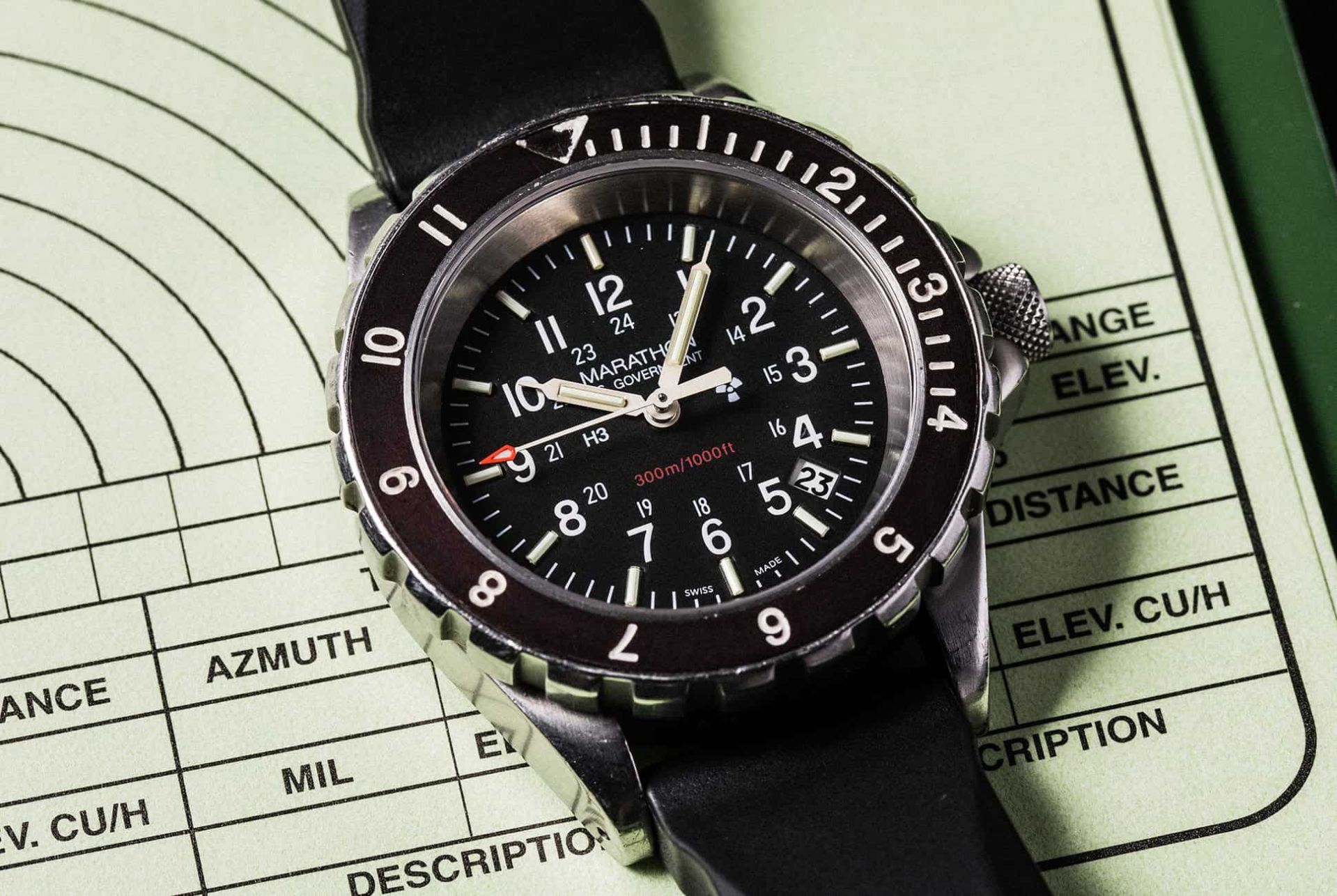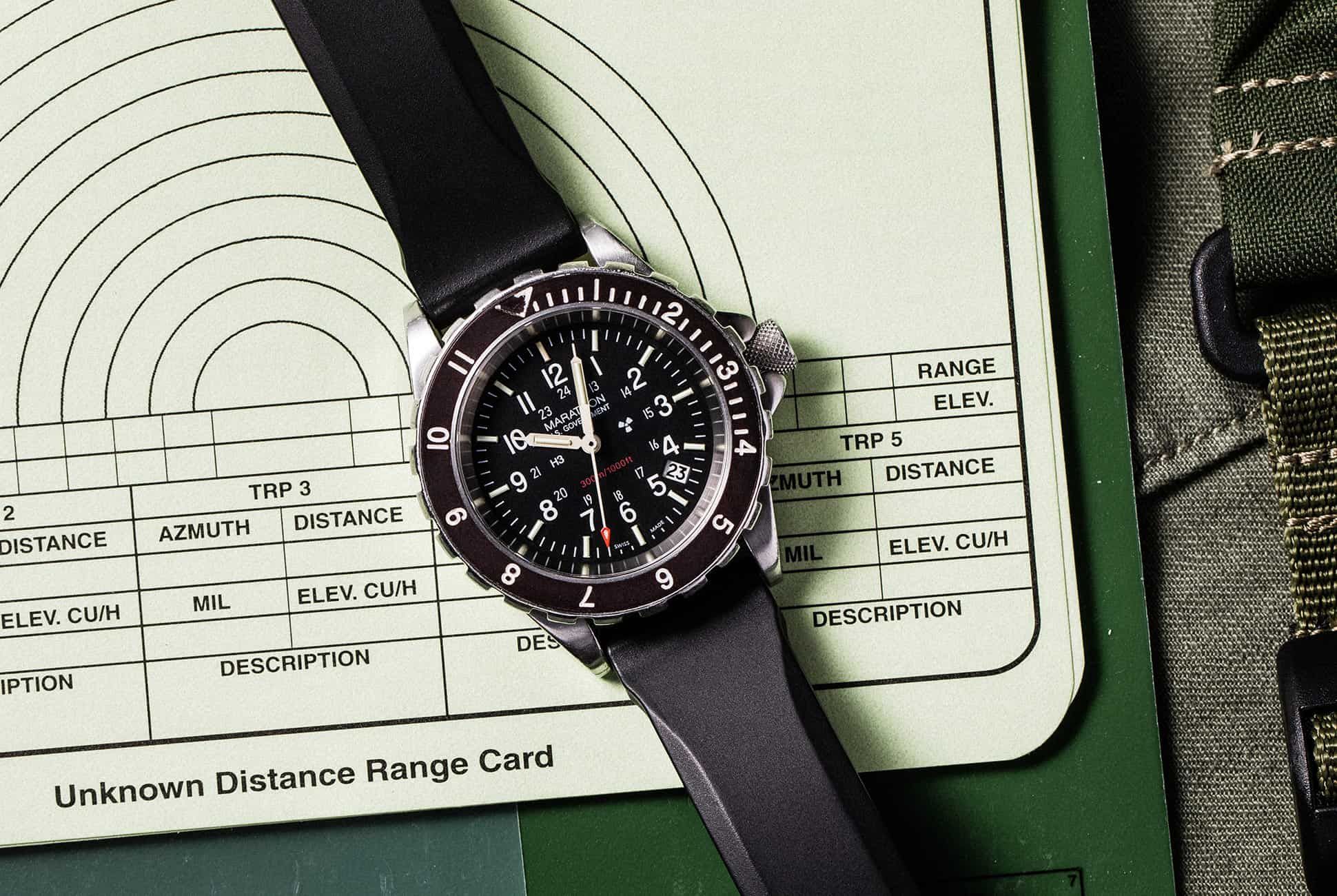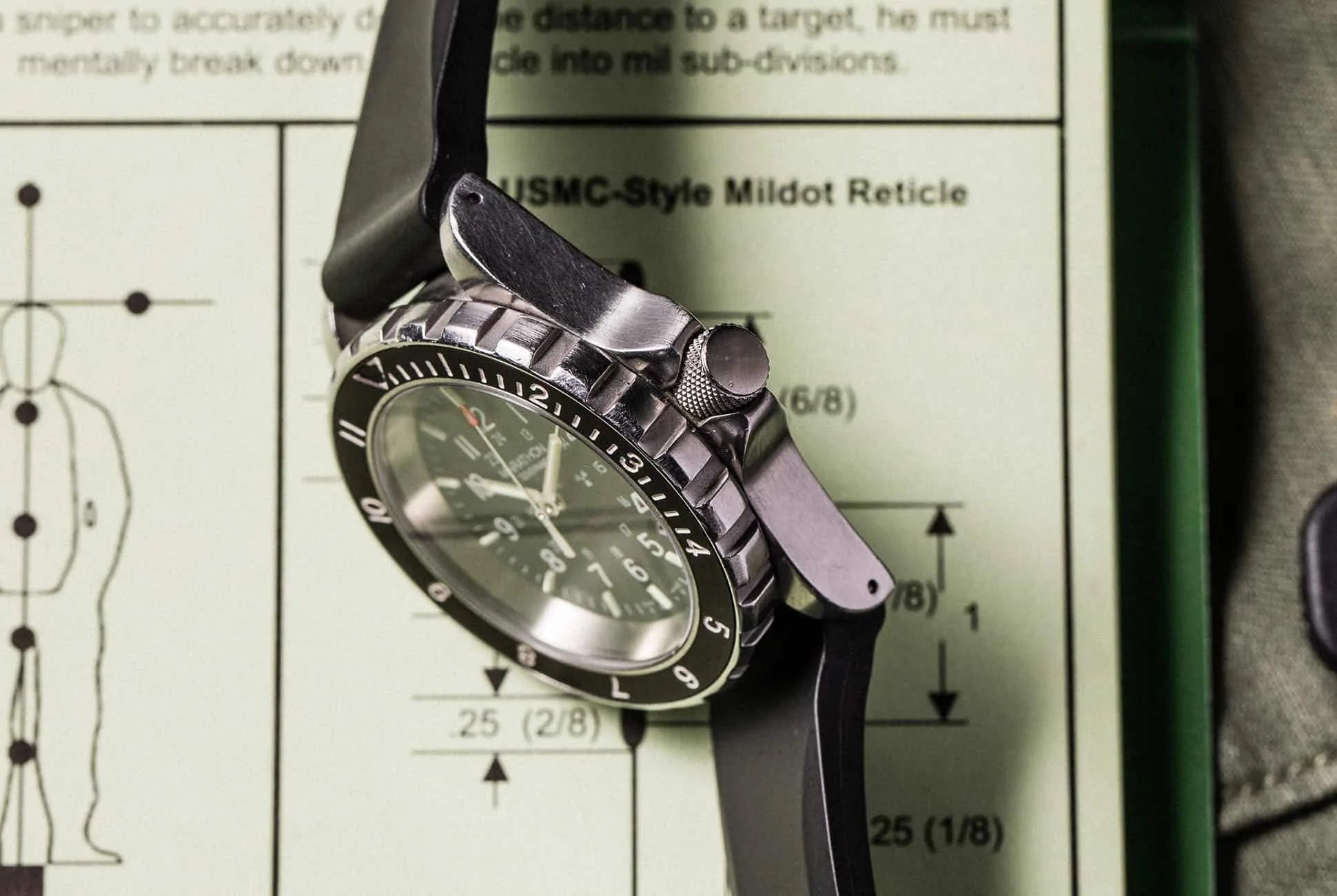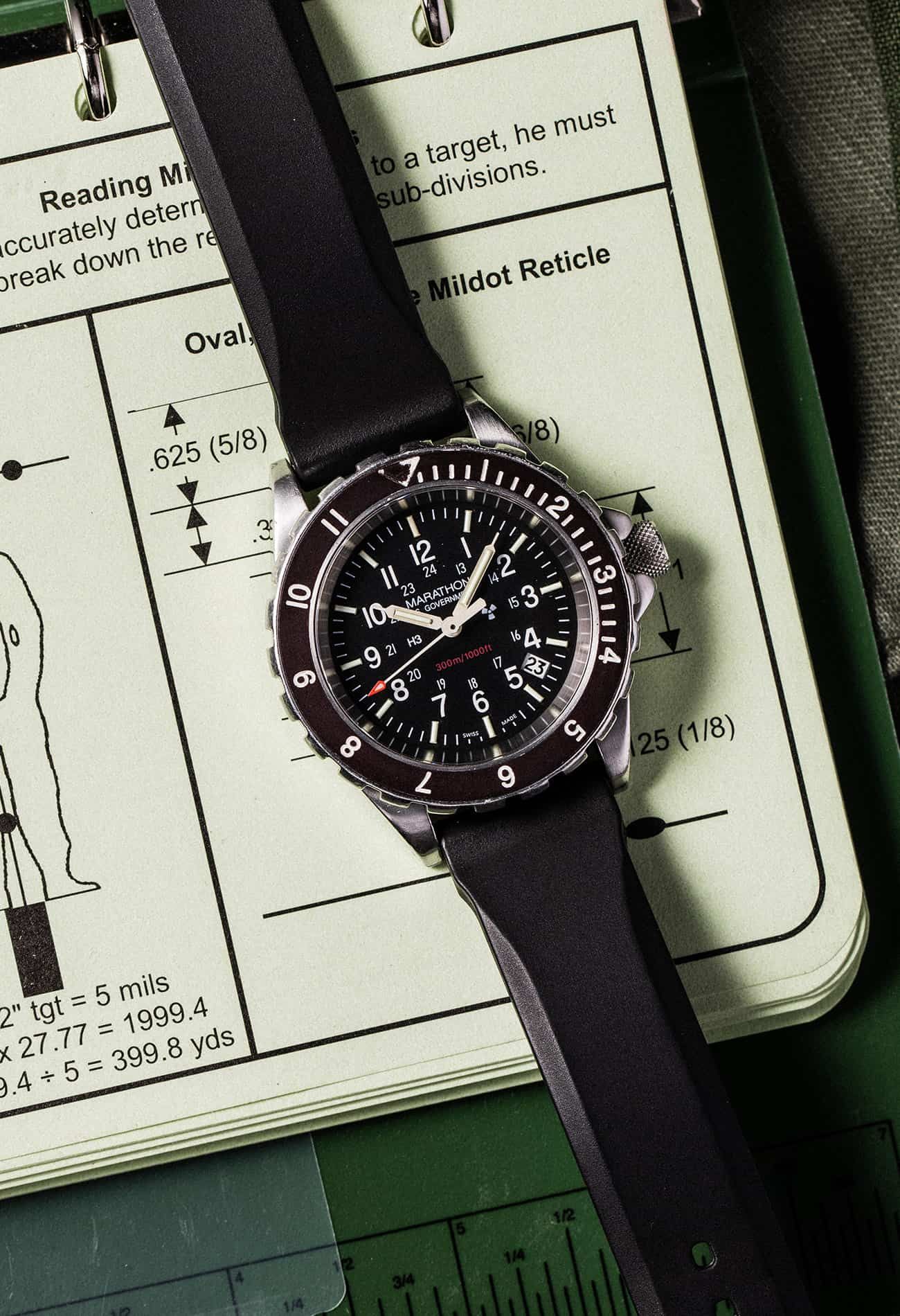2 photos
Although an entire genre of horology is dedicated to the military-issued watch, there are very few accounts written by servicemembers who actually wore them during combat operations. Blog posts and entire websites cover the topic, oriented on design elements and specifications, manufacturer details, and the conditions of inventory and issue to troops, but first-hand accounts of where and why they were worn are nonetheless slim.
Perhaps there are simply very few veterans who care to write about the intersection of horology and military service. Truth be told, I only stumbled into the realm of mil-spec tool watches because my Timex field watch’s band fell apart during my third deployment to Iraq in 2008.
Although I failed to accomplish a repair with 100MPH tape (duct tape), or affix a field-expedient paracord bracelet to replace the delaminated nylon strap, I have the good fortune to recall the day I checked into 1st Battalion, 5th Marines as a newly-minted infantry officer in 1996. The supply officer regrettably advised that although I rated a foot locker, valise pack, and wristwatch, he had none of those items on hand, and I could only sign out a flyer’s kit “parachute” bag to store my personal fighting-load equipment.

This moment stuck with me though, and 12 years later aboard a temporary combat outpost near Iraq’s Sinjar Mountain (a landmark now known to many due to myriad ISIS atrocities), I sought out the unit SuppO in the hope that he might be able to field a replacement instrument. He knew nothing of the old practice of issuing an officer’s complement of personal items, but he chuckled when he said he could solve my watch problem. Thus my relationship with the Marathon Tritium-Search and Rescue (TSAR) was born.
“He knew nothing of the old practice of issuing an officer’s complement of personal items, but he chuckled when he said he could solve my watch problem.”



